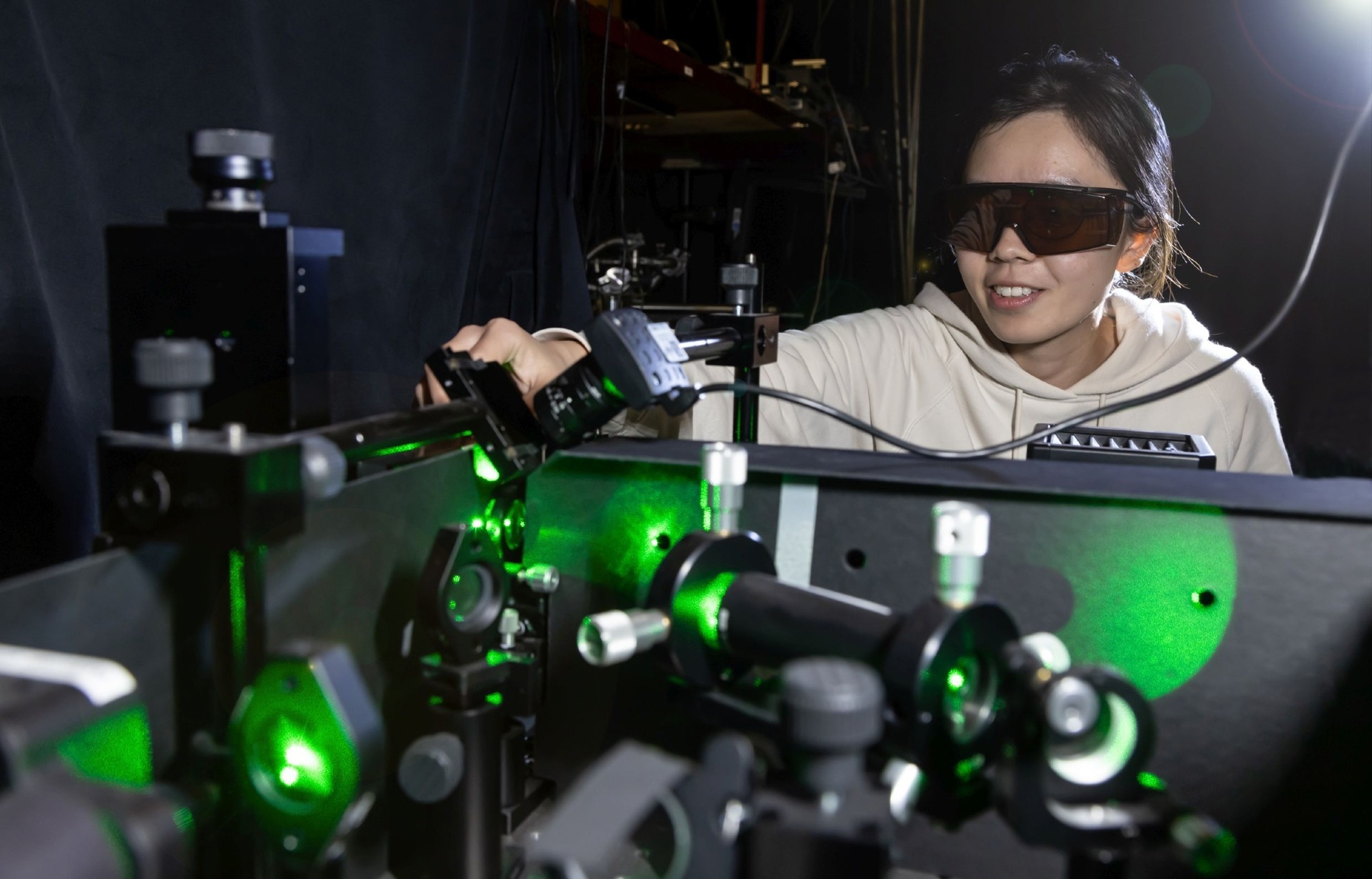Perovskite solar cells, which are very efficient and reasonably cheap to build, have often surprised people in recent years. Researchers at Forschungszentrum Jülich have recently, by means of a novel method for measuring photoluminescence, identified another unique characteristic of the cells.

HDR photoluminescence measuring station: Dr. Genghua Yan was responsible for a large part of the measurements. Image Credit: Forschungszentrum Jülich/Ralf-Uwe Limbach
It was discovered that the physical laws governing the loss of charge carriers in this particular type of cell differ from those commonly applied to semiconductors. This could be the primary cause of their high degree of effectiveness. The journal Nature Materials published the results.
For photovoltaics, perovskite solar cells are seen to be quite promising despite the fact that their stability could use some improvement. These kinds of cells are highly effective and reasonably priced to print. Their efficiency has increased to over 25% in the previous ten years, putting them today on par with silicon-based conventional solar cells. It looks like there may be further advancements in the future.
An important factor here is the question of how long excited charge carriers remain in the material, in other words, their lifetime; understanding the processes is crucial to further improving the efficiency of perovskite-based solar cells.
Thomas Kirchartz, Forschungszentrum Jülich
The electrical engineer is the head of a working group on organic and hybrid solar cells at Forschungszentrum Jülich’s Institute of Energy and Climate Research (IEK-5).
It is the Lifetime that Counts
Photons in a solar cell lift electrons from the valence band into the conduction band, where they are elevated to a higher energy level. They can only then flow through an external circuit and move more freely.
Only if they live long enough to get through the absorber material and reach the electrical contact will they be able to contribute to the generation of electrical energy. A hole, or mobile vacancy, is also left in the underlying valence band by an excited electron. This vacancy can travel through the material similarly to a positive charge carrier.
The primary cause of excited electrons swiftly returning to lower energy levels is flaws in the crystal lattice. At that point, the impacted electrons are unable to continue assisting the current flow.
Thomas Kirchartz said, “This mechanism is also known as recombination and is the main loss process of every solar cell.”
Recombination Crucial for Efficiency
Atomically speaking, no solar cell is flawless; all of them have certain flaws brought on by the production process. Electrons and holes have a tendency to gather at these flaws or alien atoms in the lattice structure. After that, the electrons return to the valence band and lose all of their ability to generate energy.
It had previously been assumed that recombination is predominantly triggered by defects that are energetically located in the middle between the valence and conduction bands. This is because these deep defects are similarly accessible to excited electrons and their counterparts, the holes.
Thomas Kirchartz, Forschungszentrum Jülich
This is probably the case for the majority of solar cell types.
Shallow Defects Dominate
For perovskite solar cells, however, Kirchartz and his colleagues have now refuted this theory and demonstrated that the shallow imperfections ultimately determine the cells' ultimate efficiency. They are situated extremely close to the valence or conduction band, as opposed to the middle of the band gap, in contrast to the deep defects.
Thomas Kirchartz added, “The cause of this unusual behavior has not yet been fully clarified, and it is reasonable to assume that deep defects simply cannot exist in these materials. This restriction may also be one of the reasons for the particularly high efficiency of the cells.”
New HDR Measurement Technique with Extended Dynamic Range
Only creative transitory photoluminescence measurements allowed for this observation. Shallow defect-caused loss processes could not be distinguished from other factors that caused loss processes in prior tests.
In comparison to traditional technology, the new measurement technique created by Thomas Kirchartz and his team at Forschungszentrum Jülich provides data with a far higher dynamic range, or data over a greater measuring range and with superior fine gradation.
The method works on a similar principle to high dynamic range grade HDR images. To build a data set, one can extend the dynamic range of the camera by superimposing multiple images or measurements, in this instance, signals with varying levels of amplification.
Journal Reference
Yuan, Y., et.al. (2024). Shallow defects and variable photoluminescence decay times up to 280 µs in triple-cation perovskites. Nature Materials. doi.org/10.1038/s41563-023-01771-2